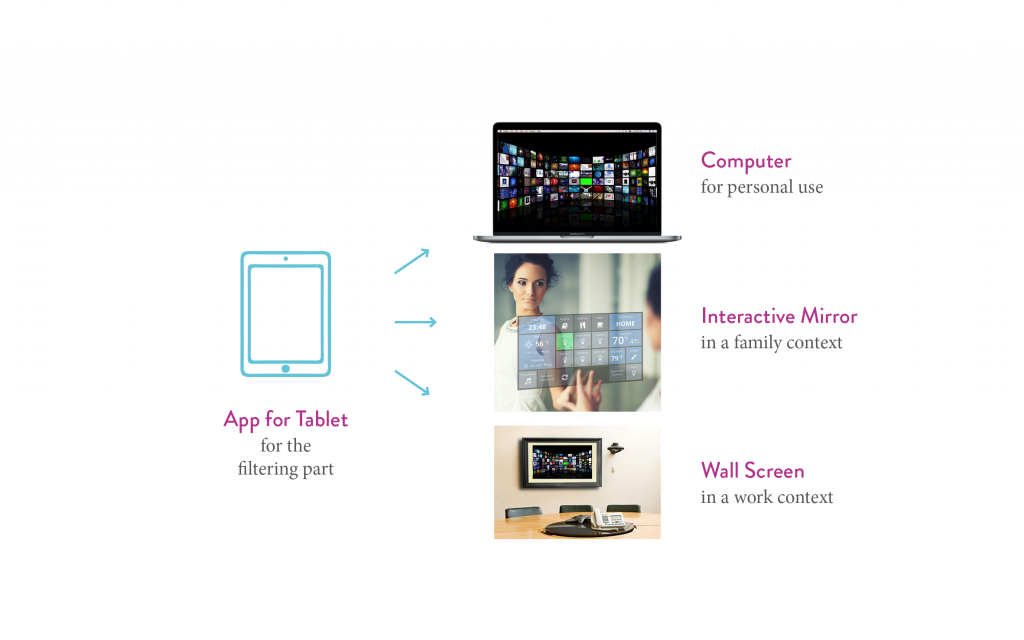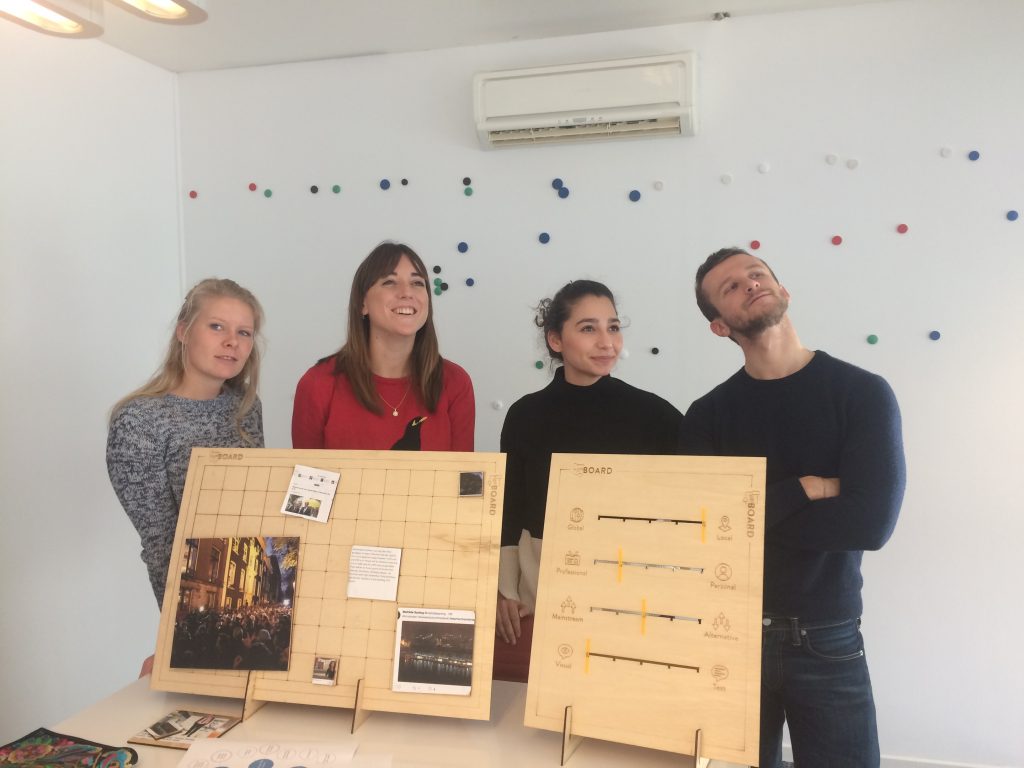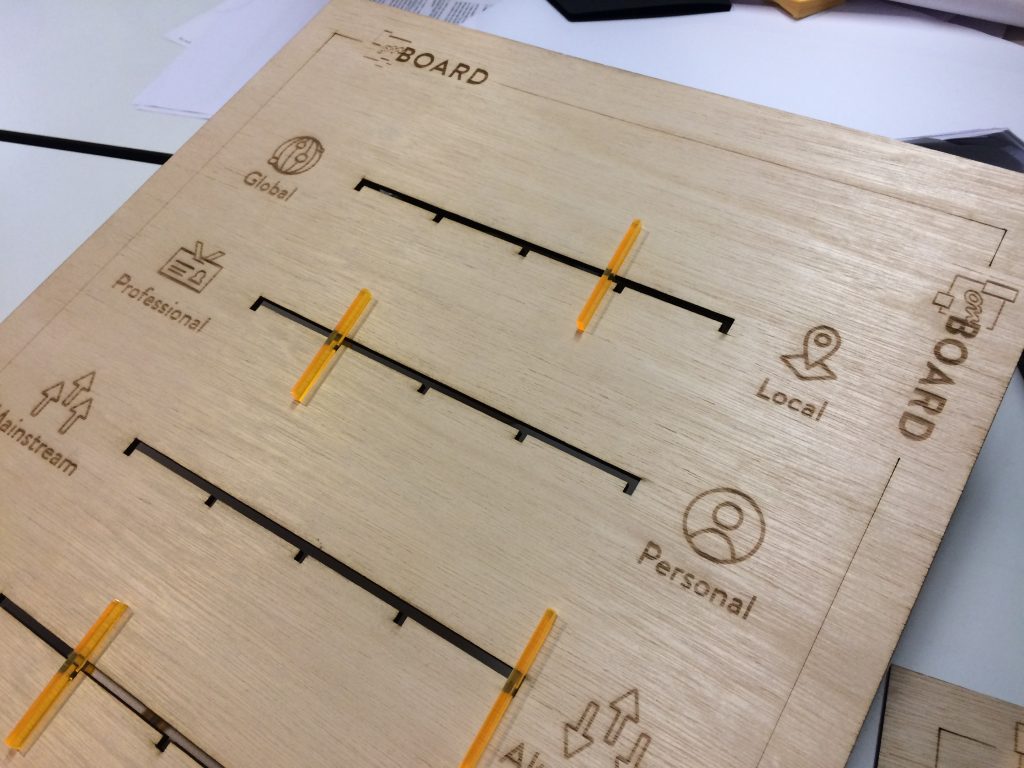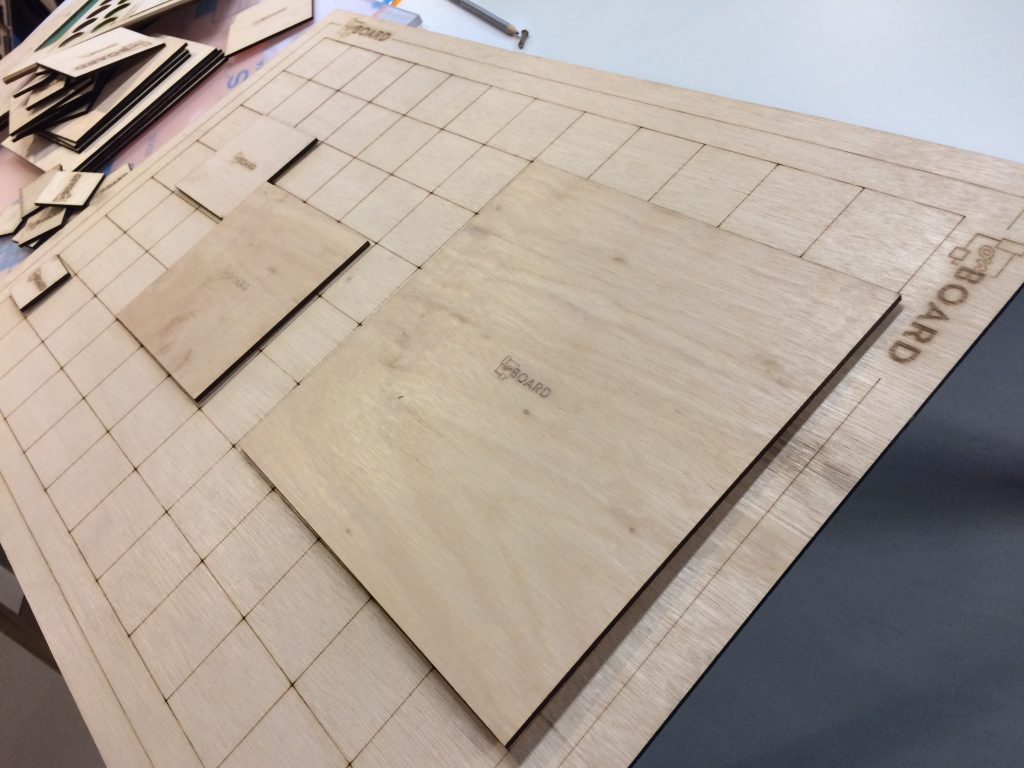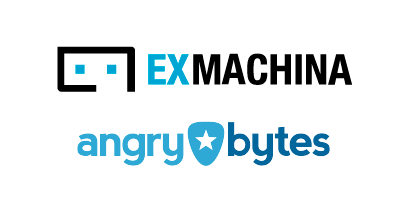For this third sprint our goal was to create a physical prototype (or a paper/ digital) of a cross-platform service with a focus on personalization and data awareness, following the assumption that people are not aware of what kind of data they are sharing and they are not happy with a personalized online services and platforms.
// Process
We started the sprint with a research focused on personalization, data trends and filter bubbles and applying the insights from the research to a live streaming context we came out with an interesting prototype as a delivery for the sprint.
// Research
We took David Weinberger’s definition for personalization from 1999 as a starting point for our research, according to him, “Personalization is the automatic tailoring of sites and messages to the individuals viewing them so that we can feel that somewhere there’s a piece of software that loves us for who we are”.
Taking this as s reference we found three different levels of personalization:
- Highly personalized: addressed to a particular individual.
- Moderate personalized: based on common characteristics of a population subgroup.
- Non-personalized: no specific target.
As a source for the research on personalization and data awareness we took the survey we did in the first sprint in which we took insights and interesting quotes from the participants, our objetive of taking again the survey was to make a deeper research on when people feel scared and annoyed when a platform recognizes their data and makes suggestions for them and when they feel surprised and curious about it.
“I would not mind personalization if the results are truly good. However, most times the suggestions are pretty terrible”.
“Booking needs to know where I would like to go and not where I where I have been. It’s annoying to get offers in places you’ve already been”.
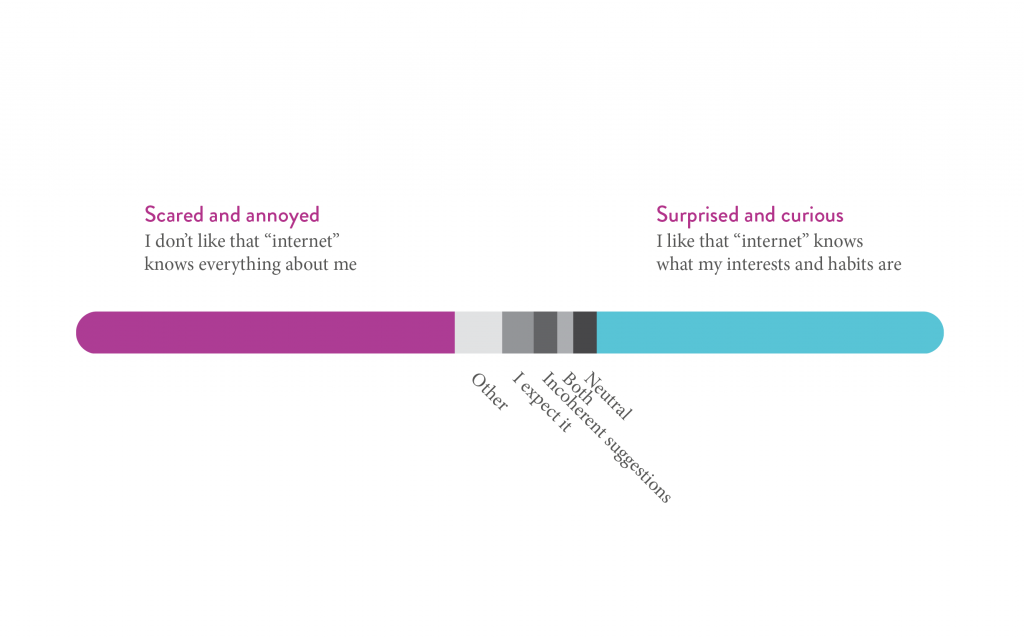
In order to have more qualitative answers about personalization and data awareness and get better people’s emotions, we decided to invite people to write a love or a break up letter of a time when a service gave them personal feedback or suggestion that they found useful or invasive. We got 26 interesting letters in 24 hours.
After having the references of existing definitions for personalization and after receiving the perspective of the people about personalized online services, we ideated our own definitions of personalization:
- General definition // Using information from the user to offer a tailored experience on the single user.
- Consumer’s perspective // The fact of services using consumer’s personal data in order to receive new relevant inputs that expand consumer’s knowledge.
- Streamer’s point of view // A method to get information about the user and tools from the platform in order to reach more people, have a human and user centered approach to develop long lasting connections with the user.
- For the platform // Understanding user’s needs in order to have good analytics for an agile and efficient platform and offer a value proposition for the streamer and the user.
- For us // Offering an open minding tailored experience on the single user to avoid filter bubbles.
As a final part of the research of this sprint we had a look at some interesting concepts related to data awareness as the “Internet of Things”, “Machine Learning” and Samrt Cities” and to the concept of “Filter Bubbles” as a data trend, in order to get some inspiration for the ideation part of the sprint.
We looked at Eli Pariser, who was the creator of the concept of the filter bubble and who defines the concept as a “personal ecosystem of information that’s been catered by algorithms” and that makes people get information on the Internet that feeds that ideology, profile or point of view.
In order to understand the existing solutions for avoiding the filter bubbles, we found the following four cases:
- escapeyourbubble.com
Online service that works mainly with Facebook and that understands which is the point of view that the user needs to understand better, in order to provide him/her with curated positive posts to help him/her understand a accept different points of view. - allsides.com
In order to avoid Fake News, allsides is a website that provides multiple angles on the same story in order to help et the full picture. - hifromtheotherside.com
It’s a website that connects people with different ideological thoughts in order to promote “healthy “discussions about politics. - readacrosstheaisle.com
It’s an app that notice the user, when he/she is a little too comfortable in his/her filter bubble and remains hims/her to go to see what other people is reading.
// Ideation
For the creative part of the sprint we combined personalization on online services with data trends connected to personalization and live streaming in news, games and sports.
In order to start ideating solution we first focused on identifying the real problem, that’s why we used the Lotus Blossom tool in order to redefine the problem generating a big amount of ideas. The main problem that we asume was that “personalization is more difficult during the live streaming” and with the Lotus Blossom we came out with eight deeper problems that came from the main one, all of them divided into more technical problems or behavior problems. From them, we choose four ideas that we wanted to implement in the solution:
- Using real time data to affect the streaming and the content itself.
- Have a shared indexing of content.
- Make people go out form their own bubbles of information.
- Personalized the platform and the content.
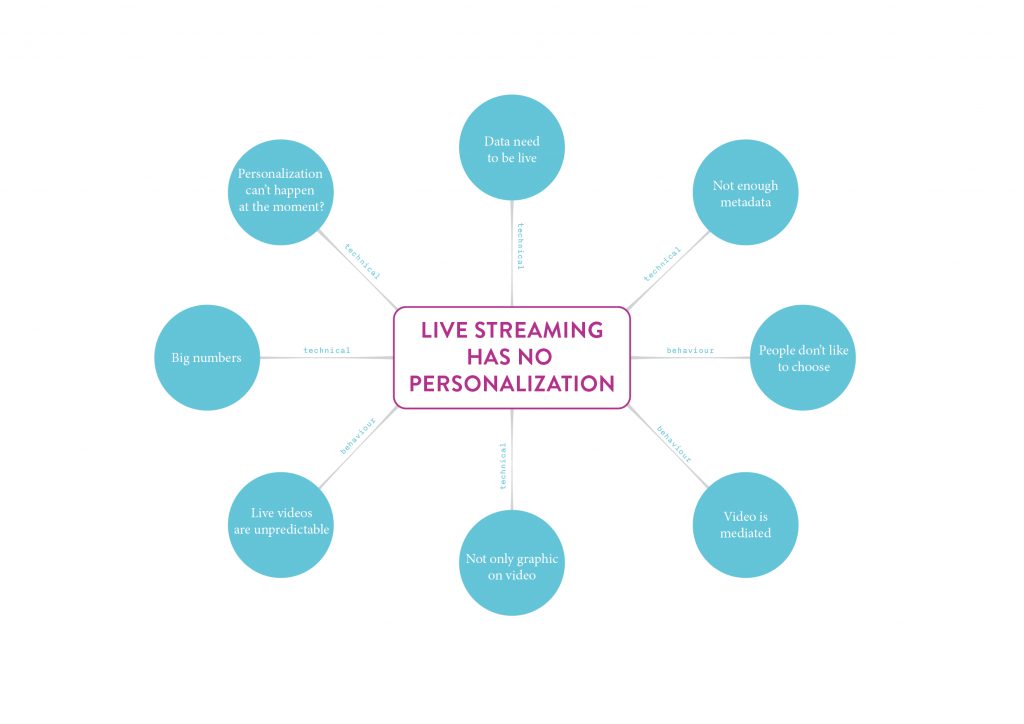
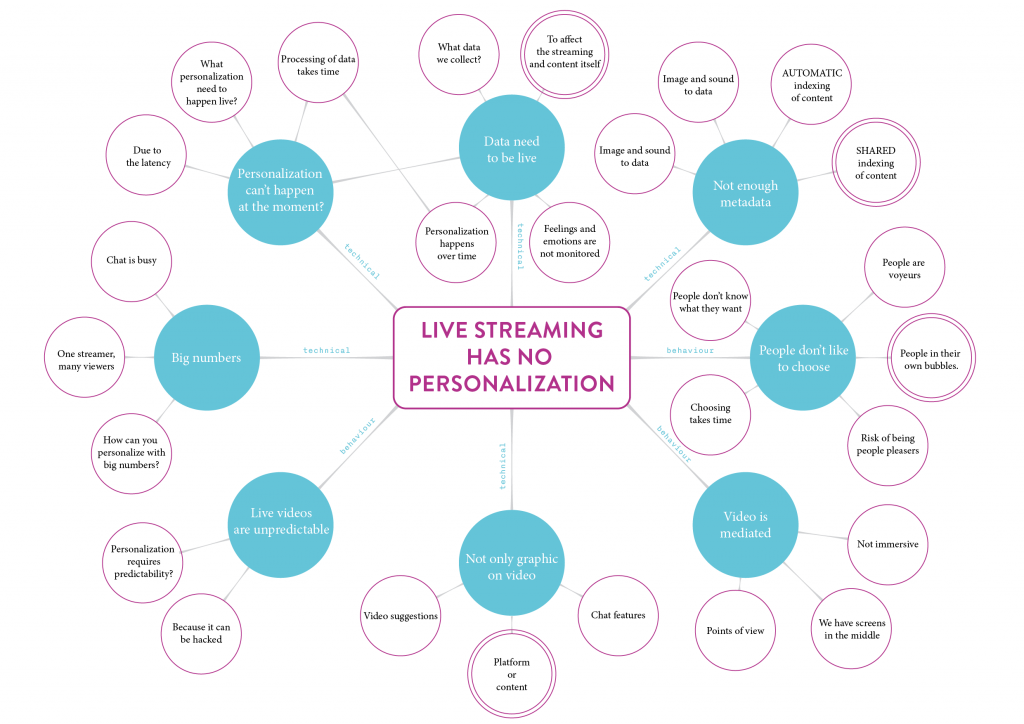
After having the idea of which were the ingredients that we wanted to implement in our solution, we made a brainstorming session using the “superheroes tool” answering to the following question: “How can we design a service/product to make people go out from their filter bubble of information?”. And we came out with an idea that mixes news, opening user’s mind and switching of pants of views, also called “On Board”.
// Prototype
On Board is a metaphor of an online personalized platform that helps the user consume news in an open minded way, reaching different points of views of the same issue and helping her/him to go out from the filter bubble. The platform is composed by a decision making system and a personalized board, it’s designed as an app for tablet for the filtering system, as a computer platform for personal use of the board, as interactive mirror layer for a family or group context and as a wall screen for a working environment.
The platform is composed by a decision making system and a personalized board, it’s designed as an app for tablet for the filtering system, as a computer platform for personal use of the board, as interactive mirror layer for a family or group context and as a wall screen for a working environment.
